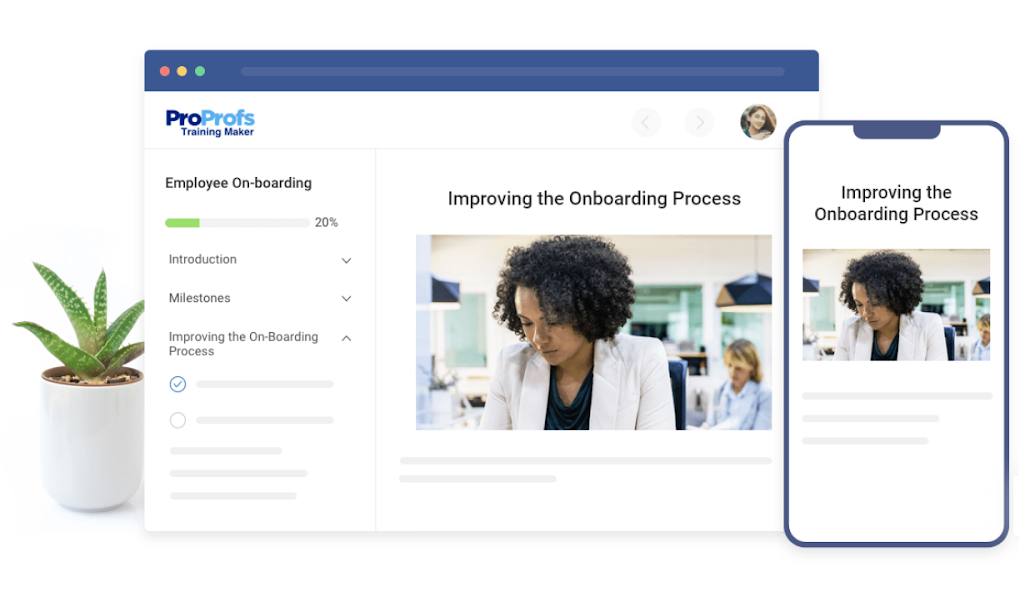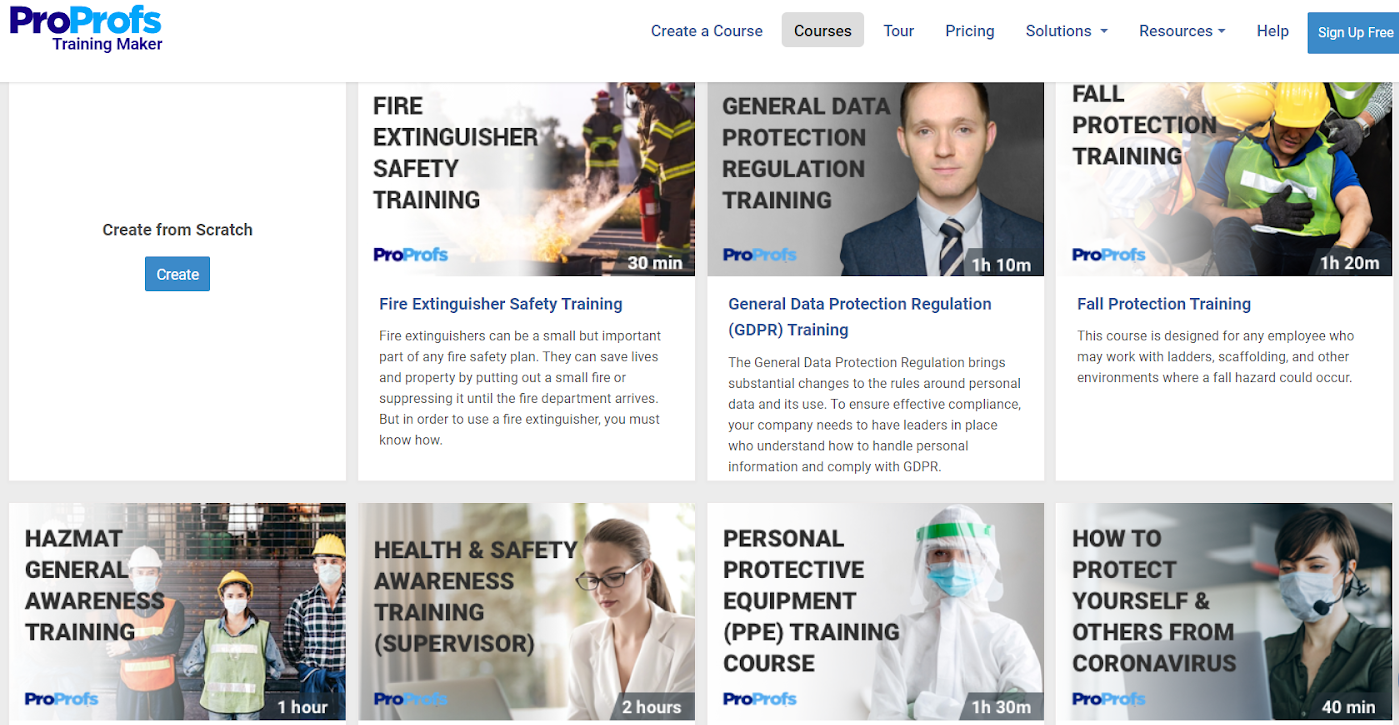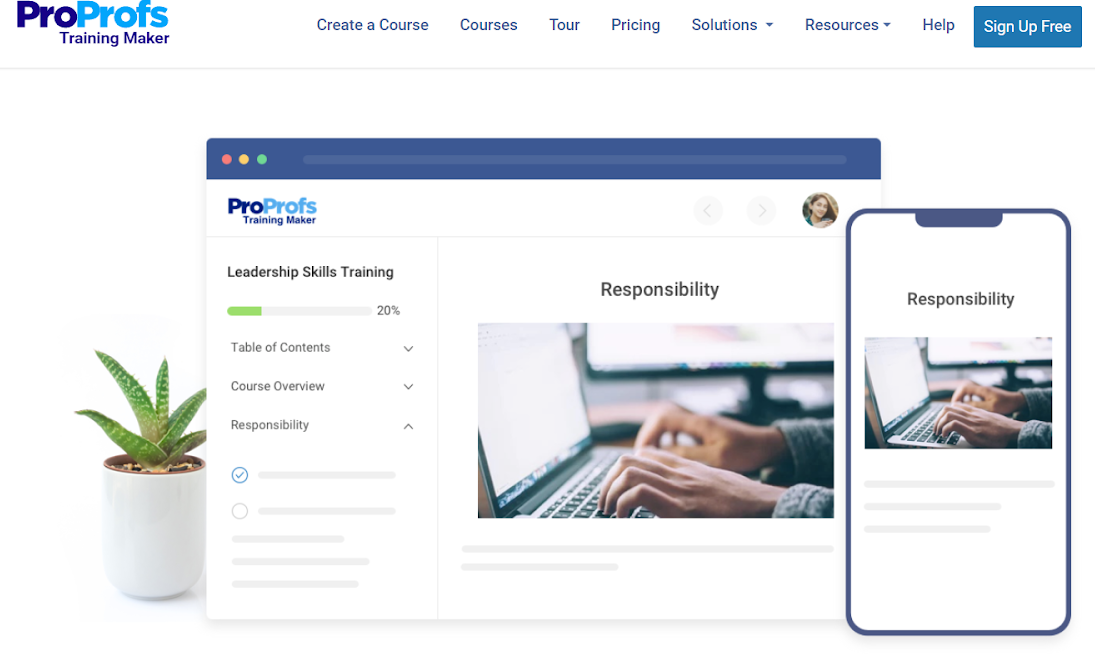Non-profit organizations face several volunteer training challenges.
A lack of training funds, geographically dispersed members, and the absence of standard training departments can all contribute to this.
And some volunteers join an organization without even knowing what is expected of them.
Coordinating volunteer activities, inconsistencies in efforts, disorganization, volunteer burnout, and lack of time are some of the biggest challenges faced by nonprofit organizations.
So, how can you get all the volunteers on the same page? How can you ensure that each of your volunteers works in a coordinated manner?
The answer is simple! Train your employees online.
Online training is an extremely flexible learning mode where volunteers can virtually pursue coursework anywhere and anytime.
Affordability, virtual collaboration opportunities, time management, and skill development are some noteworthy features of online training.
If you’re looking for the best ways to train your volunteers and meet learning objectives, you’ve come to the right place.
In this blog, you’ll learn about volunteer training, its importance, and the right ways to create an impactful online volunteer training program.
What Is Volunteer Training?
Volunteer training is a training program designed for volunteers to provide the knowledge and skills essential for community services they perform as a nonprofit organization.
This training aims to help volunteers fulfill their roles and responsibilities independently, confidently, and successfully.
The idea is to empower volunteers with the knowledge and skills to engage and commit themselves to different causes or nonprofit volunteer programs.
Such training can be about any or all of the following:
- The mission of your programs or causes
- Volunteer responsibilities
- Expectations from volunteers
- Role-specific procedures
- Compliance with…
- fundraising rules
- charity laws
- data security
- health & safety
WATCH: What Is Employee Training?
Types of Volunteer Training
Nonprofit organizations or NPOs that invest in volunteer training are investing in their own success. Nonprofit training is crucial because it boosts productivity, engagement, and volunteer retention rates.
Training can vary depending on the company’s size, requirements, and activities. Here is a list of the common types of volunteer training you can deliver:
1. Onboarding Training
Onboarding training is a program designed to acclimate individuals to the company policies, culture, and responsibilities.
Through this training, your volunteers will grow their knowledge about the work environment and have an in-depth understanding of their duties.

Your onboarding training should cover an overview of the company, its policies, goals, mission, role-specific tasks, and more.
2. Safety and Compliance Training
Compliance training familiarizes the volunteers with the rules and regulations applicable to their industry and job roles. It’s training mandated by regulation, legislation, and policies.
An effective training program ensures proper governance in an organization, maintains the company’s reputation, and creates a safe working environment.
Volunteers that work for industries that involve physical labor should also be given safety training. This training helps increase awareness of workplace injuries and educates volunteers on the basics of health and safety.
Safety training will prevent your organization from liabilities and insurance claims. Make sure you keep a record of the training. Why? Because per OSHA training requirements, the training never occurred if you don’t have records of it.

Safety training programs such as fire extinguisher, fall protection, PPE, etc., should be incorporated into your training program as applicable.
3. Leadership Training
Train your volunteers on how to manage groups, lead teams, and help them learn what it takes to be an exceptional leader.

Leadership training has several benefits:
- It helps build better teams
- Improves leadership styles
- Promotes better decision making
- Increases retention rates
 Tips
Tips
We’d love to hear your tips & suggestions on this article!
Get Free Employee Training Software — All Features, Forever.
We've helped 567 companies train 200,000+ employees. Create courses in under a minute with our AI LMS or use 200+ ready-made courses on compliance, harassment, DEI, onboarding, and more!

 We'd love your feedback!
We'd love your feedback! Thanks for your feedback!
Thanks for your feedback!







